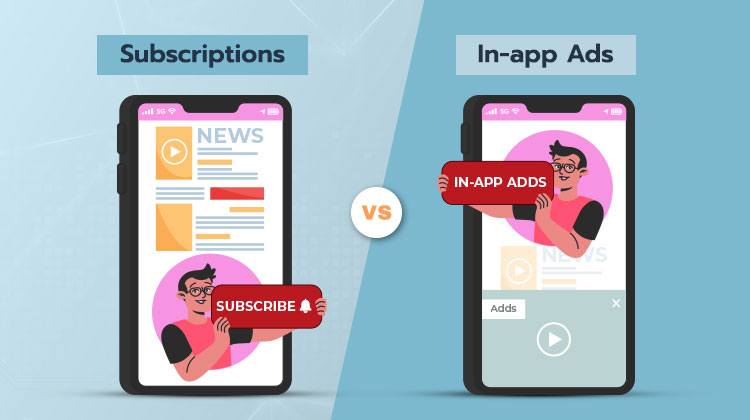
22 Dec, 2024
The shift to digital news consumption has revolutionized how publishers generate revenue. As news apps become the go-to source for instant updates and personalized content, publishers are exploring strategies to sustain their platforms while keeping readers engaged. News app monetization largely relies on two primary models: subscriptions and in-app advertising. Each comes with its own set of opportunities and challenges, tailored to different audience preferences and business goals.
In this blog, we’ll break down the pros and cons of these monetization methods and examine how emerging trends like content personalization are reshaping the way news apps drive engagement and profitability.
Why News App Monetization Matters
News apps have become a lifeline for modern readers who want quick, reliable updates at their fingertips. However, maintaining and growing a news app requires substantial investment in content, technology, and user experience. Monetization strategies are vital to cover these costs and ensure long-term sustainability. The process of news portal development plays a crucial role in this, as it involves creating a platform that is not only user-friendly but also capable of supporting various monetization strategies.
Whether through subscription plans or ad-supported content, the key is finding a balance between user satisfaction and profitability. Let’s examine how these two approaches differ.
Subscription Models: Offering Value for Loyalty
Subscription models involve charging users a recurring fee for exclusive or premium content. This approach has gained traction, especially among apps that focus on high-quality journalism or specialized reporting.
Benefits of Subscription Models
• Predictable Revenue Streams: Subscriptions provide consistent income, allowing publishers to plan ahead and invest in better content and features.
• Ad-Free Experience: By eliminating ads, this model ensures an uninterrupted and enjoyable reading experience for users.
• Focus on Quality: Subscription-driven apps often prioritize meaningful, in-depth reporting to retain subscribers.
Challenges of Subscription Models
• User Resistance: Convincing users to pay for news, especially when free alternatives are available, can be difficult.
• Content Expectations: Subscribers expect a high level of value and exclusivity, which can increase pressure on content teams.
Example of Success
The Guardian’s app has successfully adopted a voluntary subscription model, offering users access to premium content while allowing others to enjoy free news. This hybrid approach has helped them grow their audience while generating revenue.
In-app Advertising: Monetizing Free Content
For news apps targeting larger, more cost-conscious audiences, in-app ads remain a popular choice. This model generates revenue by displaying advertisements, such as banners, videos, or native ads, within the app.
Benefits of In-app Advertising
• Accessible Content: Users can enjoy free access to news, making it easier to attract a broader audience.
• Scalable Revenue: Apps with high traffic can earn significant ad revenue, especially with diverse ad formats.
• Flexibility: Publishers can experiment with different ad types, such as sponsored articles or interactive ads, to maximize engagement.
Challenges of In-app Advertising
• User Disruption: Poorly placed or intrusive ads can harm the user experience and lead to higher app abandonment rates.
• Ad Blockers: Growing use of ad-blocking tools can reduce the effectiveness of this monetization strategy.
Example of Success
Apps like Flipboard and Google News effectively use ads to provide free content while maintaining a clean, user-friendly interface.
Content Personalization: Enhancing User Engagement
One of the most significant trends in digital news is content personalization. By leveraging data analytics and user behavior, news apps can tailor content and ads to individual preferences.
How It Benefits Subscriptions
Personalized recommendations can increase user satisfaction and make subscriptions more appealing by delivering content that aligns with reader interests.
How It Enhances In-app Advertising
Targeted ads perform better than generic ones. Personalized ads can improve click-through rates and create a more engaging experience for users.
Choosing the Right Monetization Strategy
Selecting the best monetization model depends on several factors:
1. Audience Demographics
• Subscription models work well for apps targeting niche or premium audiences.
• Ad-supported models are better suited for mass-market apps with diverse users.
2. Content Offering
• High-quality, in-depth journalism lends itself to subscriptions.
• Aggregated or quick news updates are ideal for ad-based models.
3. Business Goals
• If consistent revenue is a priority, subscriptions are more predictable.
• If maximizing reach and scale is the goal, in-app ads are more effective.
The Role of Hybrid Models
Hybrid models are gaining popularity, combining the strengths of both strategies. For example:
• Free content with ads for general users.
• Premium ad-free access for paying subscribers.
This approach caters to different audience segments while diversifying revenue streams.
Real-World Insights and Trends
• Subscriptions are Growing: According to Reuters, the percentage of users paying for online news increased by 13% in 2023.
• Ad Revenue is Expanding: Statista projects that digital advertising revenue will exceed $700 billion globally by 2024, indicating significant growth opportunities for ad-supported apps.
• Personalization is Key: Research by Accenture found that 91% of consumers are more likely to engage with brands offering relevant recommendations.
Conclusion
Monetizing a news app is all about finding the right approach for your audience and goals. Subscription models offer steady income and attract users who prefer premium, ad-free content. On the other hand, in-app ads allow you to reach a wider audience by keeping content free while generating revenue from ads.
Whether you choose one strategy or a mix of both, the key is understanding your audience and offering a great user experience. By adding personalization and keeping the app easy to use, you can balance making money with keeping your readers happy. In a competitive market, the right monetization plan can help your app grow and succeed.
________________________________________________________
What is the main difference between subscriptions and in-app ads?
Subscriptions generate revenue from paying users, while in-app ads rely on non-paying users to engage with displayed advertisements.
Can a news app use both subscriptions and in-app ads for monetization?
Yes, many news apps use a hybrid model, combining subscriptions for premium content and ads for free-tier users.
How do subscriptions improve the user experience?
Subscriptions often offer an ad-free experience and access to premium content, making the app more appealing to dedicated users.
Why are in-app ads popular for monetizing news apps?
In-app ads provide revenue without requiring users to pay, making them accessible to a larger audience.
What is a hybrid monetization model for news apps?
A hybrid model combines subscriptions for premium users and in-app ads for free-tier users.
How can hybrid models balance ads and subscriptions?
Hybrid apps can offer an ad-free experience and exclusive content for subscribers while showing ads to free users.
_________________________________________________________
You May Also Read
News Applications: How Our App Development Company Transforms Concepts into Cutting-Edge Solutions

